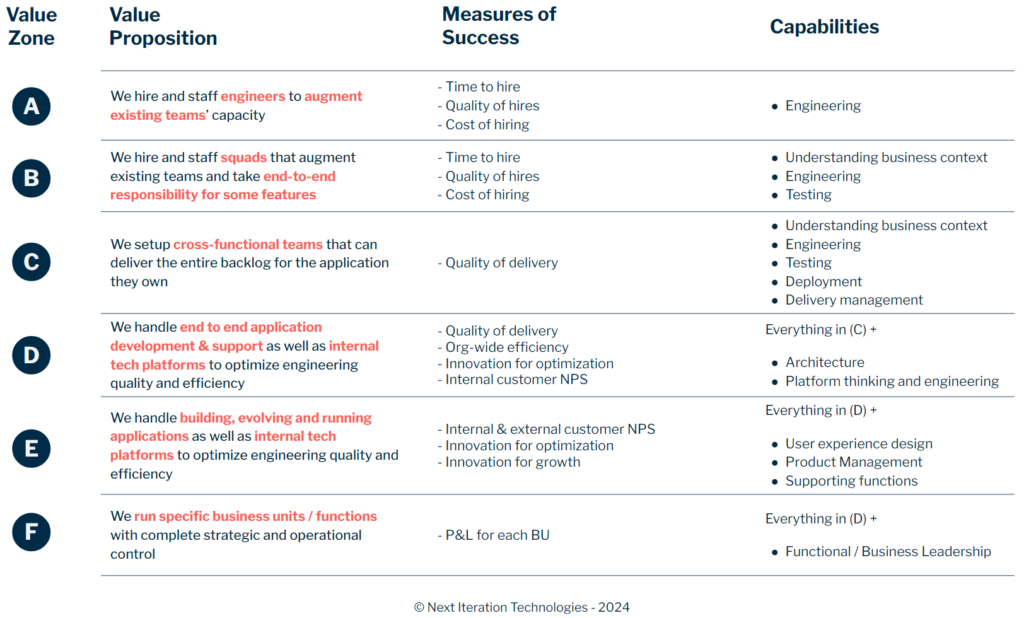What capabilities are you building in your GCC?
Determining what capabilities you need
In the first part, we discussed the value zones framework to determine the value proposition with which you operate a GCC. Here’s a quick reminder of the value zone framework if you’ve missed the previous post.

Today we will look at the capabilities required to deliver on that proposition.

Depending on which value zone your GCC pre-dominantly operates in, you will need to build a different set of capabilities. For example: if you choose to operate in the value zone (A) your value proposition is “Engineering capacity at lower cost” and you will require engineering capabilities in your GCC to deliver on that value.

The HQ – GCC dance
It is essential to understand how the operating relationship between the HQ and the GCC changes in different value zones and what the HQ’s role will be in each scenario.
(A) Engineering Capacity at lower cost
- The work to be transitioned gets decided based on the GCC’s ability to hire specific talent.
- At a squad / team level, all decision making (tech, delivery and product) is made in the HQ
- The new hires in the GCC augment the team and slowly pick tech and business context
- The give and take between HQ and GCC is likely to be very transactional
(B) Feature delivery at lower cost
- Most decision-making still happens at the HQ (except perhaps story level code review)
- The GCC team has more business context and a better sense of ownership since they are shipping end-to-end functionality.
(C) Delivery Ownership
- The GCC starts owning the process from backlog to production
- Tech and delivery decisions in context of the application are made in the GCC. Product decisions are still made in HQ.
- The GCC team has full context of the application they are building & supporting.
- Excellent sense of ownership at the application level
(D) Tech Ownership and Innovation
- The GCC influence moves beyond individual applications and into internal platforms
- The GCC starts working more closely with the CTO’s / CIO’s agenda
- The GCC is able to add a lot of new value because it is in a unique position to observe work happening across different BUs / Departments and spot opportunities for simplification, standardization and efficiencies
- the GCC sets up R&D / Innovation teams to work on aspects beyond the application development work
(E) Product Ownership
- The GCC application teams start taking more responsibility for the end customer experience
- The GCC starts owning the process from Idea to Backlog
(F) Business Ownership and Innovation
- The GCC owns the P&L for the BU
If you made it till here…
first of all congrats! Leave a comment and be proud that you’re amongst the 0.03% of people on the internet who has reached the end of a long form blog today!
What capabilities exist in your GCC? Have you leap-frogged over the first two zones and started your GCC in zone (C) or (D)? Do you wish to change your GCC’s value proposition?
Subscribe to the Next Iteration Newsletter to get members only content and insights directly in your inbox!
